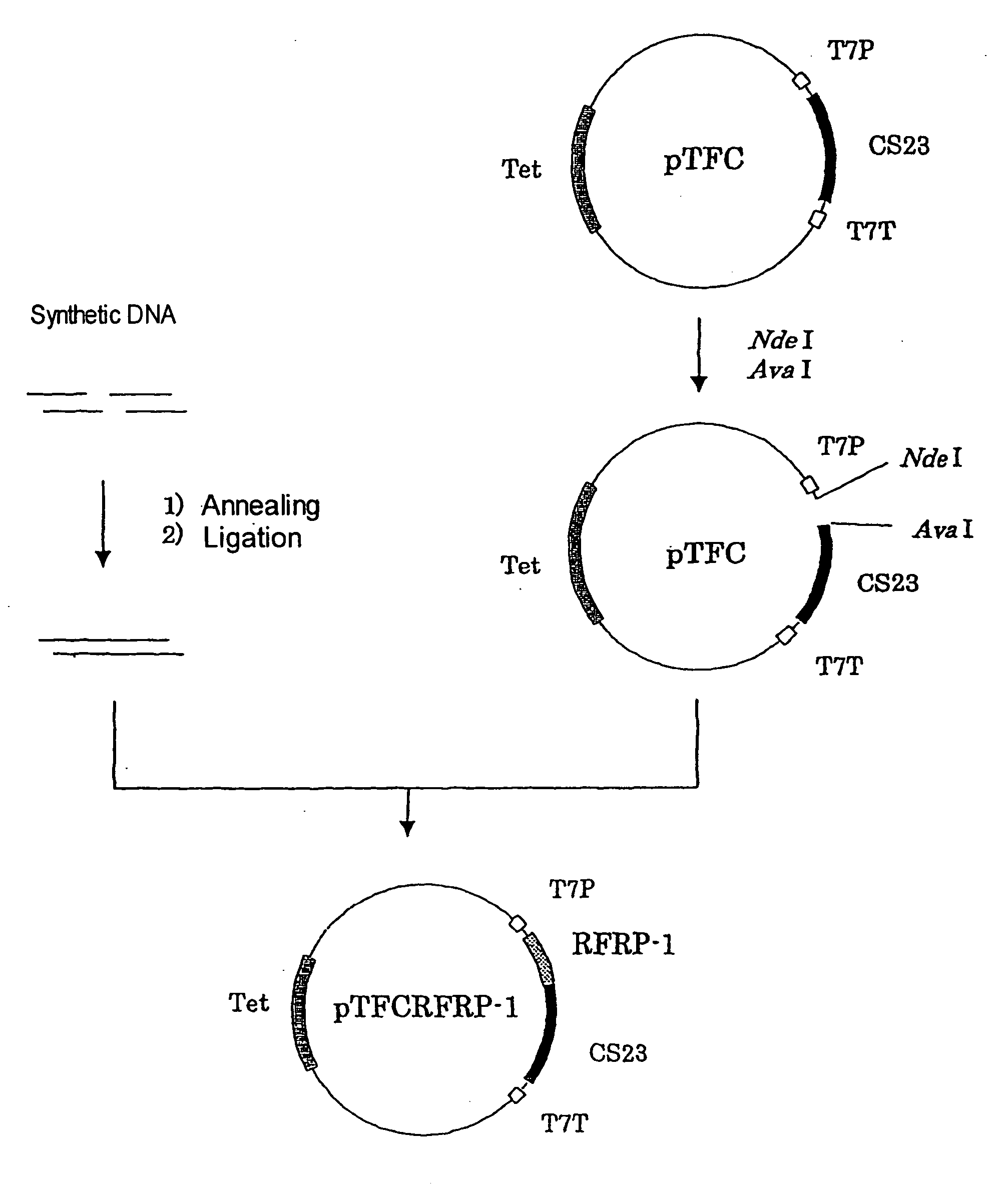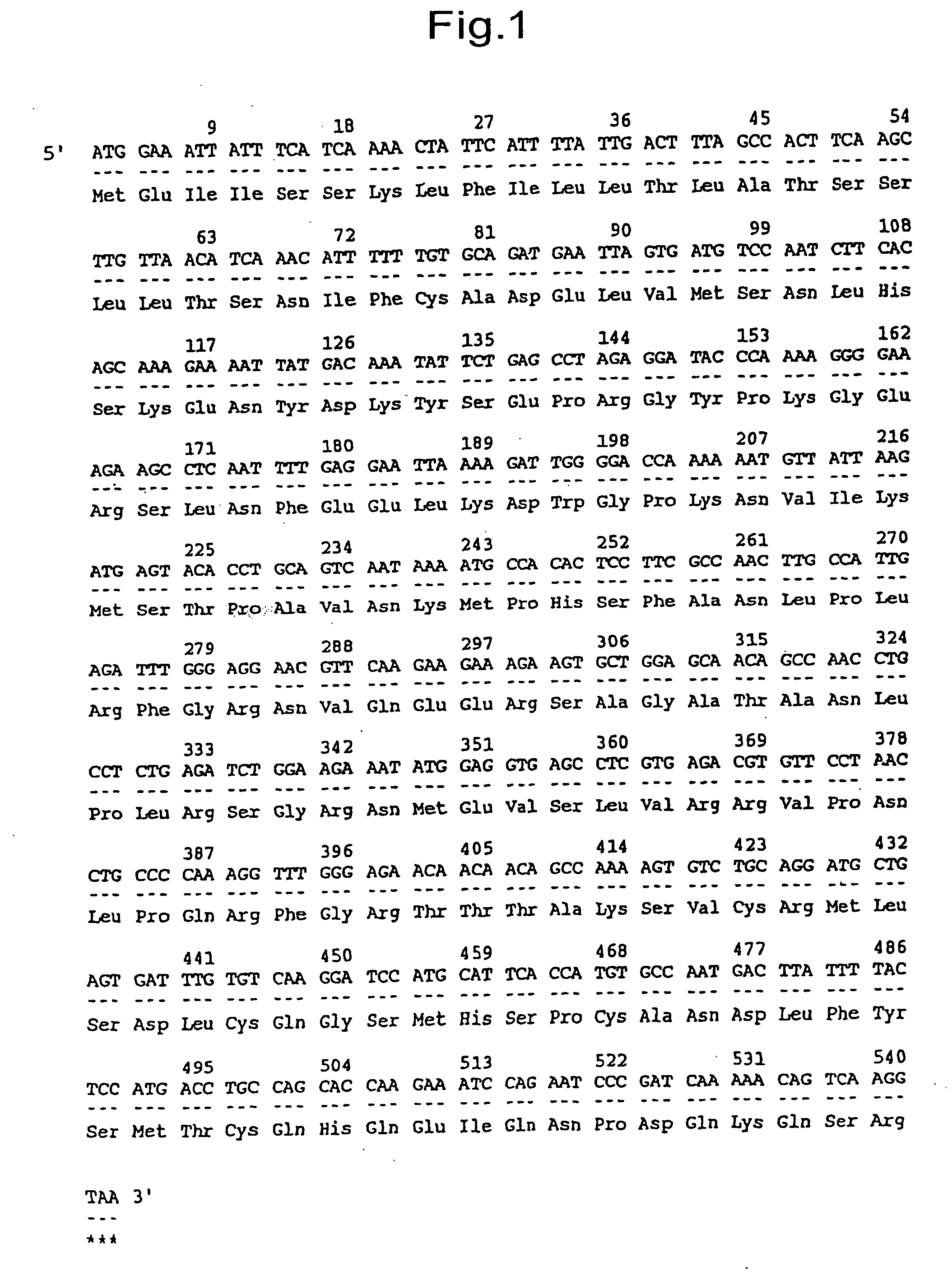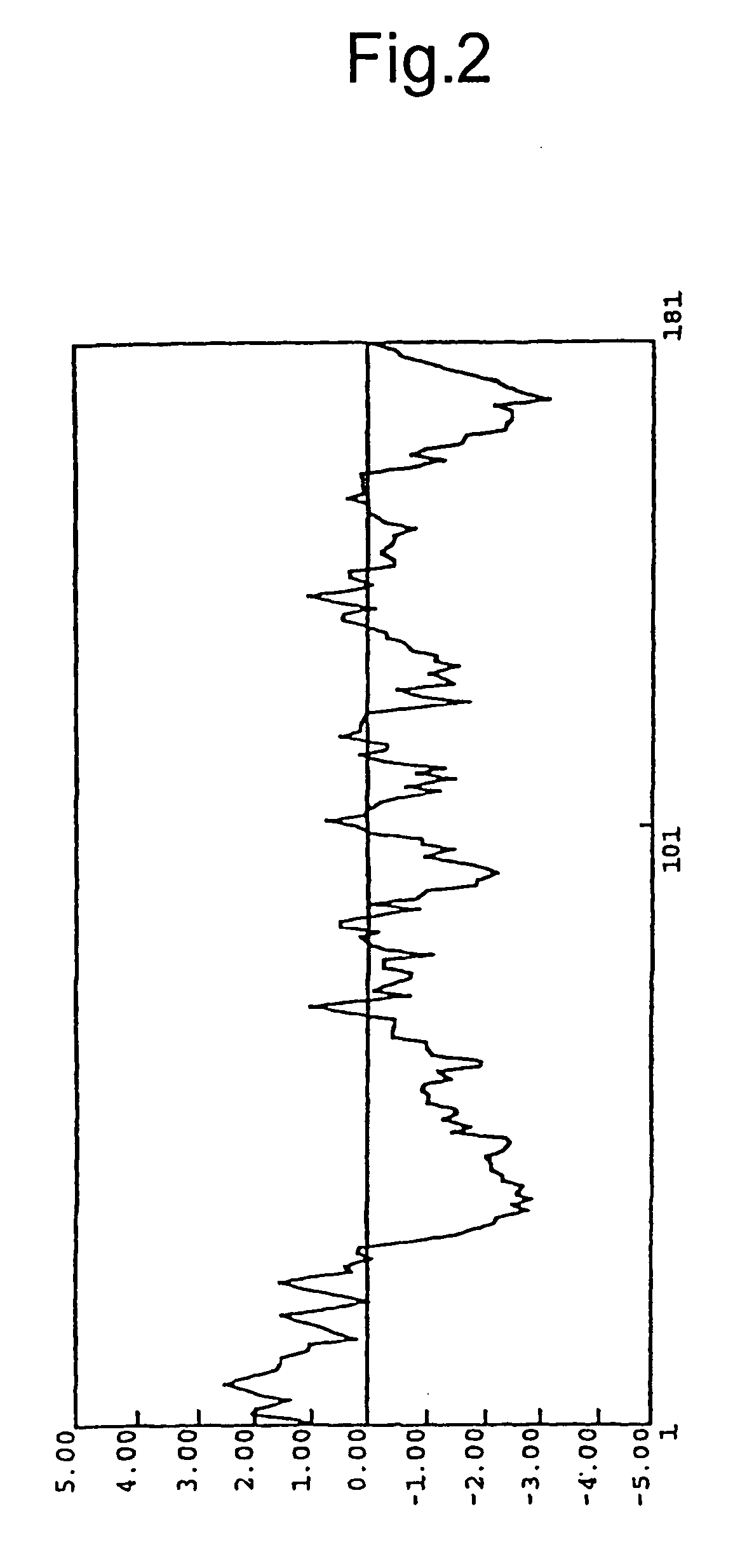Novel G protein-coupled receptor protein, its DNA and ligand thereof
a g protein-coupled receptor and dna technology, applied in the field of new polypeptides, can solve the problems of difficult to determine which objective physiologically active peptide is the objective, difficult to deduce the function of the information, and unknown if there are subtypes of known receptor proteins
- Summary
- Abstract
- Description
- Claims
- Application Information
AI Technical Summary
Problems solved by technology
Method used
Image
Examples
example 1
Synthesis of cDNA from Human Fetal Brain poly(A)+RNA Fraction and Amplification of Physiologically Active Peptide cDNA by RT-PCR
[1032] Oligo dT primer (Gibco BRL Inc.) was added as a primer to 1 μg of human fetal brain poly(A)+RNA fraction available from Clonetech and cDNA was synthesized with reverse transcriptase from Moloney murine leukemia virus (Gibco BRL Inc.) using a buffer attached thereto. After completion of the reaction, the product was extracted with phenol:chloroform (1:1) and the extract was precipitated with ethanol. The precipitate was dissolved in 30 μl of TE. Using a 1 μl of aliquot of the thus prepared cDNA as a template, amplification was performed by PCR using the following two primers (F5 and F6).
(SEQ ID NO:3)F5: 5′-GGGCTGCACATAGAGACTTAATTTTAG-3′(SEQ ID NO:4)F6: 5′-CTAGACCACCTCTATATAACTGCCCAT-3′
[1033] The reaction solution was composed of 20 μM each of the synthetic DNA primers (F5 and F6), 0.25 mM dNTPs, 0.5 μl of Ex Taq DNA polymerase and 5 μl of a buffer ...
example 2
Subcloning of the PCR Products into Plasmid Vectors and Selection of Novel Physiologically Active Peptide Candidate Clone by Decoding Base Sequence of the Inserted cDNA Region
[1036] The PCR products obtained after the PCR procedure in Example 1 were separated by using a 1.2% agarose gel. After DNA fragments were proven to be amplified to the desired size, the DNAs were recovered using Quiagen PCR purification kit (Quiagen). According to the protocol attached to TA Cloning Kit (Invitrogen Co.), the recovered DNAs were subcloned to plasmid vector pCR™2.1. The recombinant vectors were introduced into Escherichia coli JM109 competent cells (Takara Shuzo Co., Ltd.) for transformation. Then, the resulting transformant clones bearing a cDNA-inserted fragment were selected in an LB agar culture medium supplemented with ampicillin, IPTG and X-gal. Only transformant clones that showed white color were picked up with a sterilized toothpick to obtain transformant Escherichia coli JM109 / phRF1. ...
example 3
Acquisition of Splicing Variant of the Physiologically Active Peptide cDNA from Human Fetal Brain cDNA
[1039] Using as a template 1 ml of the human fetal brain cDNA prepared in Example 1, amplification was performed by PCR using the following two primers (F5 and hR1).
(SEQ ID NO:3)F5:``5′-GGGCTGCACATAGAGACTTAATTTTAG-3′(SEQ ID NO:7)hR1: 5′-CAGCTTTAGGGACAGGCTCCAGGTTTC-3′
[1040] The reaction solution was composed of 20 pM each of the synthetic DNA primers (F5 and hR1), 0.25 mM dNTPs, 0.5 ml of Ex Taq DNA polymerase and a buffer attached to the enzyme, which were mixed together to make the total volume of the reaction solution 50 ml. Using Thermal Cycler (Perkin-Elmer Co.) for amplification, one cycle was set to include 98° C. for 10 seconds, 65° C. for 20 seconds and 72° C. for 20 seconds. This cycle was repeated 40 times in total. The amplification product was confirmed by 1.2% agarose electrophoresis and ethidium bromide staining. After the PCR product was proven to be amplified, the...
PUM
| Property | Measurement | Unit |
|---|---|---|
| temperature | aaaaa | aaaaa |
| temperature | aaaaa | aaaaa |
| temperature | aaaaa | aaaaa |
Abstract
Description
Claims
Application Information
 Login to View More
Login to View More - R&D
- Intellectual Property
- Life Sciences
- Materials
- Tech Scout
- Unparalleled Data Quality
- Higher Quality Content
- 60% Fewer Hallucinations
Browse by: Latest US Patents, China's latest patents, Technical Efficacy Thesaurus, Application Domain, Technology Topic, Popular Technical Reports.
© 2025 PatSnap. All rights reserved.Legal|Privacy policy|Modern Slavery Act Transparency Statement|Sitemap|About US| Contact US: help@patsnap.com



